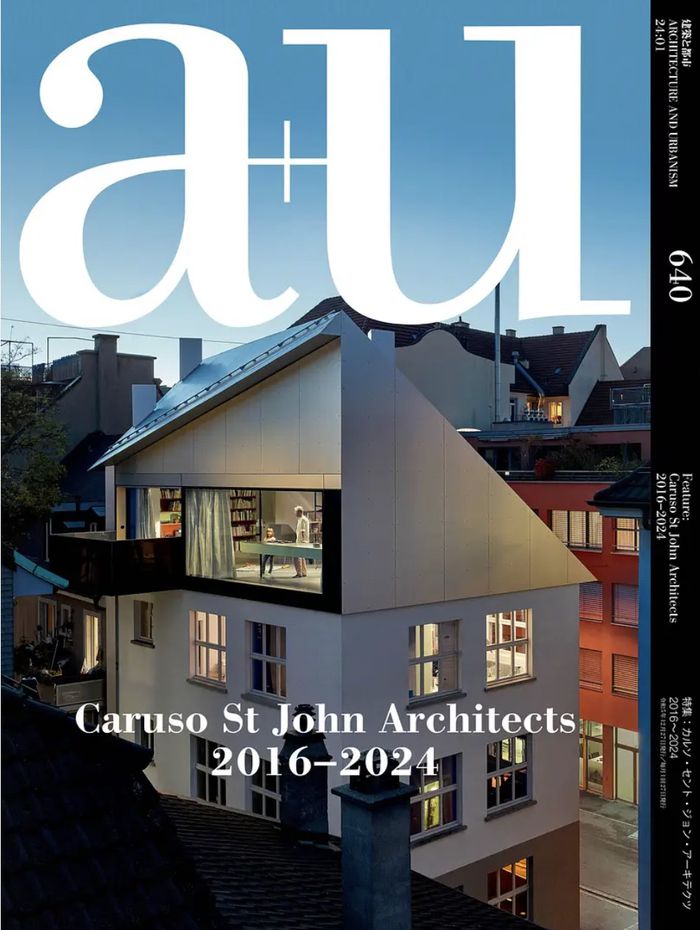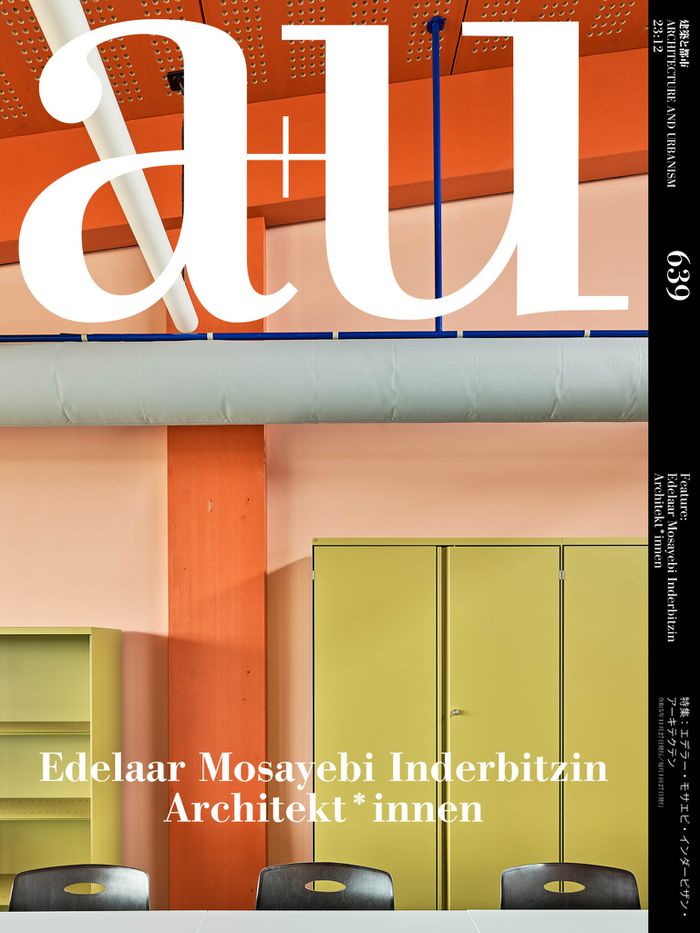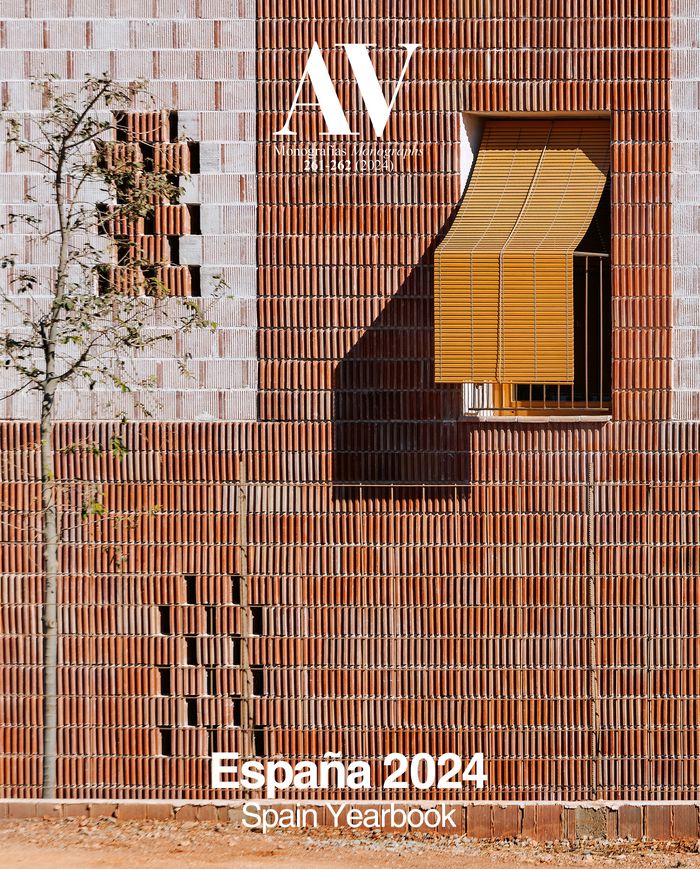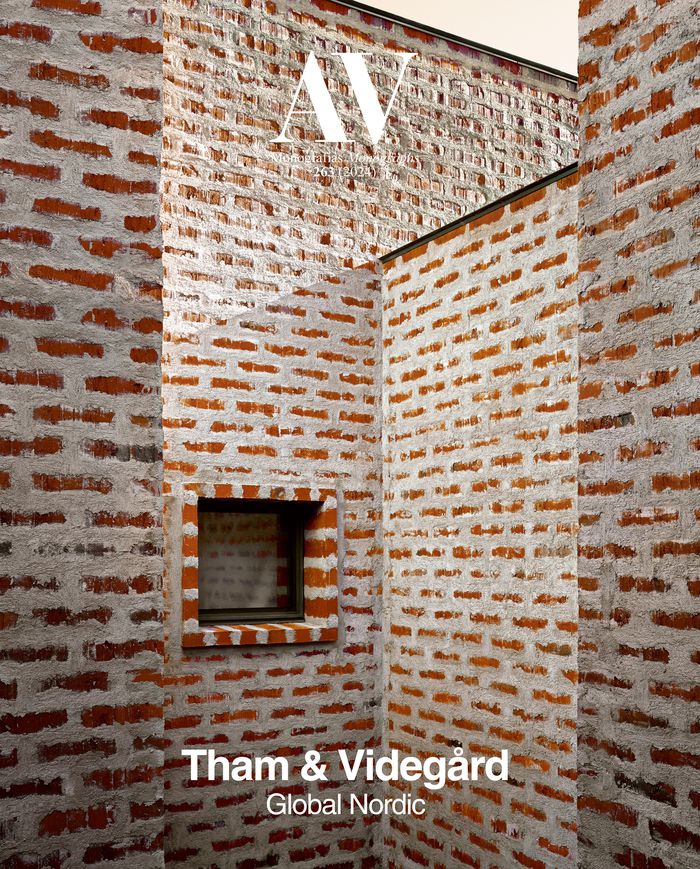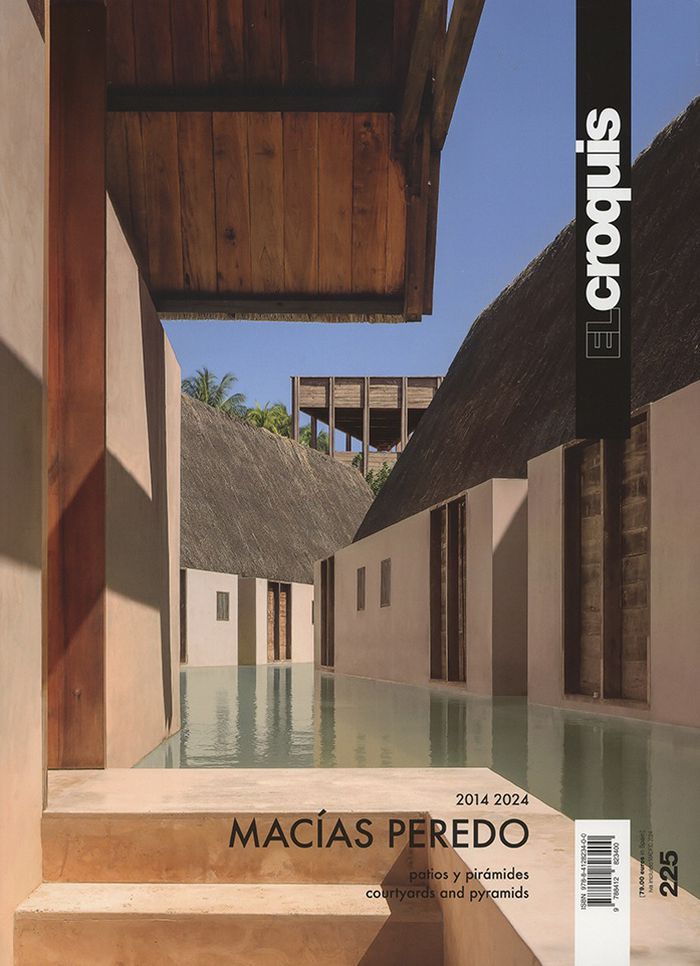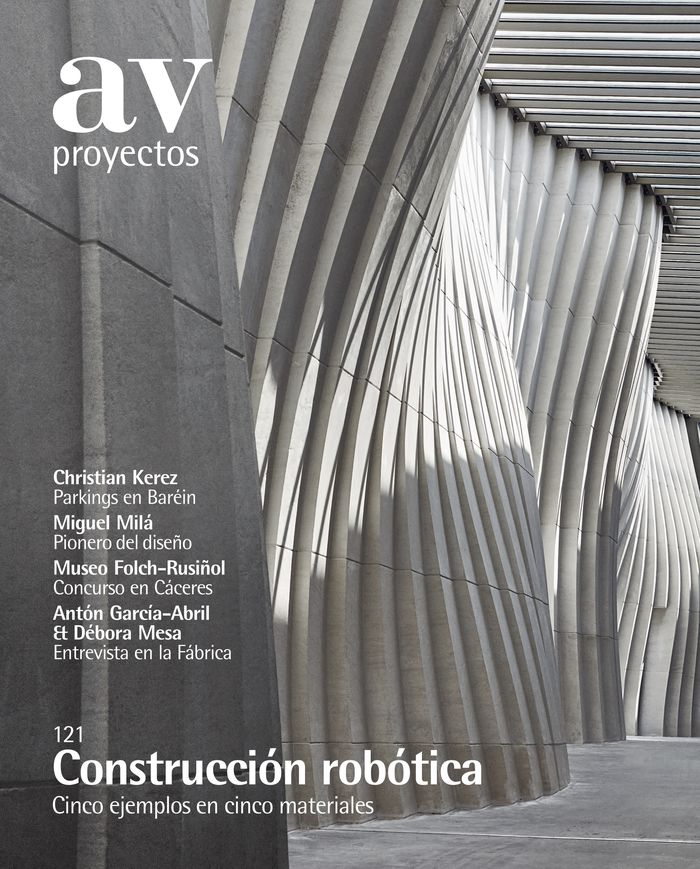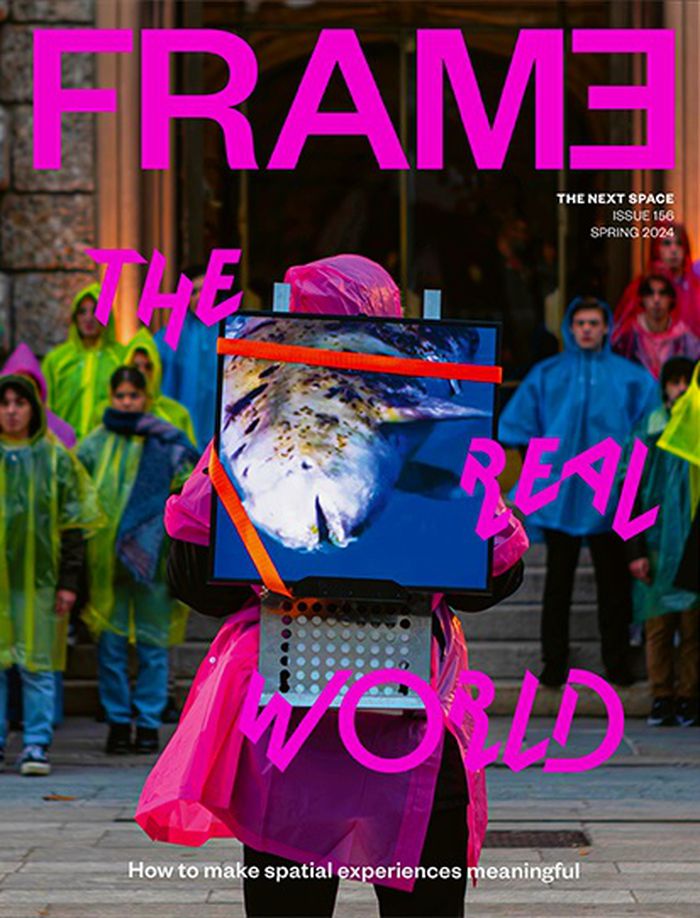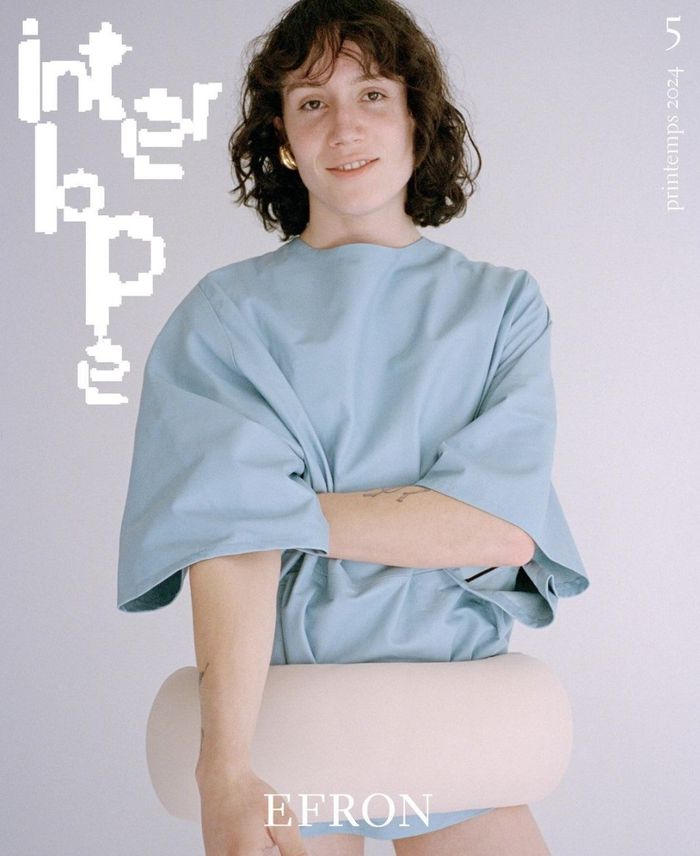Tools n° 04 : To Cut
$47.00
(disponible sur commande)
Résumé:
Le quatrième numéro de la revue annuelle qui s'attache à valoriser les savoir-faire et la technique dans le design, l'artisanat ou l'industrie, se penche sur le geste de couper. // The fourth issue of the annual magazine that promotes know-how and technique in design, craft or industry, looks at the cut.
Tools n° 04 : To Cut
Actions:
Prix:
$47.00
(disponible sur commande)
Résumé:
Le quatrième numéro de la revue annuelle qui s'attache à valoriser les savoir-faire et la technique dans le design, l'artisanat ou l'industrie, se penche sur le geste de couper. // The fourth issue of the annual magazine that promotes know-how and technique in design, craft or industry, looks at the cut.
Revues
$43.00
(disponible sur commande)
Résumé:
Adam Caruso and Peter St John have been practicing together for more than 30 years, and with the release of this issue their firm is completing a series of major buildings, like the Swiss Life Arena for the ZSC Lions hockey team in Zurich and Royal Belge, an ambitious renovation of a landmark corporate building. The firm is known for carefully analysing the existing(...)
a+u 640 : Caruso St John Architects 2016–2024
Actions:
Prix:
$43.00
(disponible sur commande)
Résumé:
Adam Caruso and Peter St John have been practicing together for more than 30 years, and with the release of this issue their firm is completing a series of major buildings, like the Swiss Life Arena for the ZSC Lions hockey team in Zurich and Royal Belge, an ambitious renovation of a landmark corporate building. The firm is known for carefully analysing the existing situation, be it the sociocultural context or an older building, to create a unique architecture that inform both materiality and detail. The nineteen works in this issue offer an overview of their more recent efforts and include the Caterbury Cathedral Organ Loft, St Jakob Foundation, Lycée Hôtelier de Lille, and Görtz Palais.
Revues
$43.00
(disponible en magasin)
Résumé:
This issue features the Swiss architecture firm known as EMI, established in 2005 by architects Ron Edelaar, Elli Mosayebi, and Christian Inderbitzin. Their works span exhibitions, refurbishments, new buildings, and urban planning, but housing remains their primary interest as they examine and reinterpret the small-scale components that contribute to human agency and(...)
A+U 639 23:12 Edelaar Mosayebi Inderbitzin
Actions:
Prix:
$43.00
(disponible en magasin)
Résumé:
This issue features the Swiss architecture firm known as EMI, established in 2005 by architects Ron Edelaar, Elli Mosayebi, and Christian Inderbitzin. Their works span exhibitions, refurbishments, new buildings, and urban planning, but housing remains their primary interest as they examine and reinterpret the small-scale components that contribute to human agency and enjoyment within a dwelling. The 21 projects featured here range from gardens and landscapes to villas and high-rises. In all of them, EMI embeds rational design choices with notions of poetry, as evidenced in the Brüggliäcker Housing Complex in Zurich, Stockmattstrasse Townhouses in Baden, and others.
Revues
GA Houses 192
$55.00
(disponible en magasin)
Résumé:
The latest issue is now available at the bookstore.
GA Houses 192
Actions:
Prix:
$55.00
(disponible en magasin)
Résumé:
The latest issue is now available at the bookstore.
Revues
$124.00
(disponible sur commande)
Résumé:
It has been 30 years since the release of the first ‘AV Monographs’ yearbook, a publication that gathers the best architecture built in Spain, taking stock of the most important debates, trends, and events of the cultural, economic, and social panorama in each period. With its latest edition, a new phase begins in which more pages are devoted to the selection of 24(...)
AV Monographs 261-262 : Espana 2024
Actions:
Prix:
$124.00
(disponible sur commande)
Résumé:
It has been 30 years since the release of the first ‘AV Monographs’ yearbook, a publication that gathers the best architecture built in Spain, taking stock of the most important debates, trends, and events of the cultural, economic, and social panorama in each period. With its latest edition, a new phase begins in which more pages are devoted to the selection of 24 buildings. Featured are the Royal Collections Gallery by Mansilla + Tuñón in Madrid, the Pallars Building by BAAS in Barcelona, social housing by Harquitectes in Gavà, and the Hortensia Herrero Art Center by ERRE arquitectura in Valencia. For the first time, space is also devoted to work by Spanish studios abroad.
Revues
$82.00
(disponible en magasin)
Résumé:
Stockholm-born architects Bolle Tham and Martin Videgård lead a studio whose work is characterised by a practical approach and conceptual experimentation with a global ambition. Respectful dialogue and meticulous integration, accompanied by a sober material palette and formal clarity, are the fundamental strategies of the 20 works and projects featured in this issue of(...)
AV Monographs 263 : Tham & Videgard
Actions:
Prix:
$82.00
(disponible en magasin)
Résumé:
Stockholm-born architects Bolle Tham and Martin Videgård lead a studio whose work is characterised by a practical approach and conceptual experimentation with a global ambition. Respectful dialogue and meticulous integration, accompanied by a sober material palette and formal clarity, are the fundamental strategies of the 20 works and projects featured in this issue of the magazine, including Moderna Museet Malmö, Västra Kajen Housing, and the utopian Casa Creek. The selection is organised in three thematic sections (Urban Essays, Domestic Devices, Built Future) and introduced with an essay by Chilean architects Mauricio Pezo and Sofía von Ellrichshausen.
Revues
$162.00
(disponible en magasin)
Résumé:
The architects of Studio Macías Peredo, based in Guadalajara and led by Salvador Macías Corona, Magui Peredo Arenas, and Diego Quirarte Contreras, believe that the act of designing is inseparable from the act of remembering. Architecture is a living testimony to the culture of a place. The studio is greatly influenced by pre-Hispanic architecture, archaeology, and Mexican(...)
El Croquis 225: Macias Peredo
Actions:
Prix:
$162.00
(disponible en magasin)
Résumé:
The architects of Studio Macías Peredo, based in Guadalajara and led by Salvador Macías Corona, Magui Peredo Arenas, and Diego Quirarte Contreras, believe that the act of designing is inseparable from the act of remembering. Architecture is a living testimony to the culture of a place. The studio is greatly influenced by pre-Hispanic architecture, archaeology, and Mexican colonial styles, and the partners travel extensively, studying vernacular and modern buildings throughout Mexico in order to grasp how they work. This issue presents their work from 2014 to 2024, including the Punta Caliza Hotel, Izamal Water Garden, and tropical residential complexes.
Revues
$30.00
(disponible en magasin)
Résumé:
The latest issue is now available at the bookstore.
AV proyectos 121 : Construccion robotica
Actions:
Prix:
$30.00
(disponible en magasin)
Résumé:
The latest issue is now available at the bookstore.
Revues
Frame 156
$59.50
(disponible en magasin)
Résumé:
The latest issue is now available at the bookstore.
INTERLOPE N°5
$24.99
(disponible sur commande)
Résumé:
Le dernier numéro est maintenant disponible à la librairie.
INTERLOPE N°5
Actions:
Prix:
$24.99
(disponible sur commande)
Résumé:
Le dernier numéro est maintenant disponible à la librairie.
Revues

